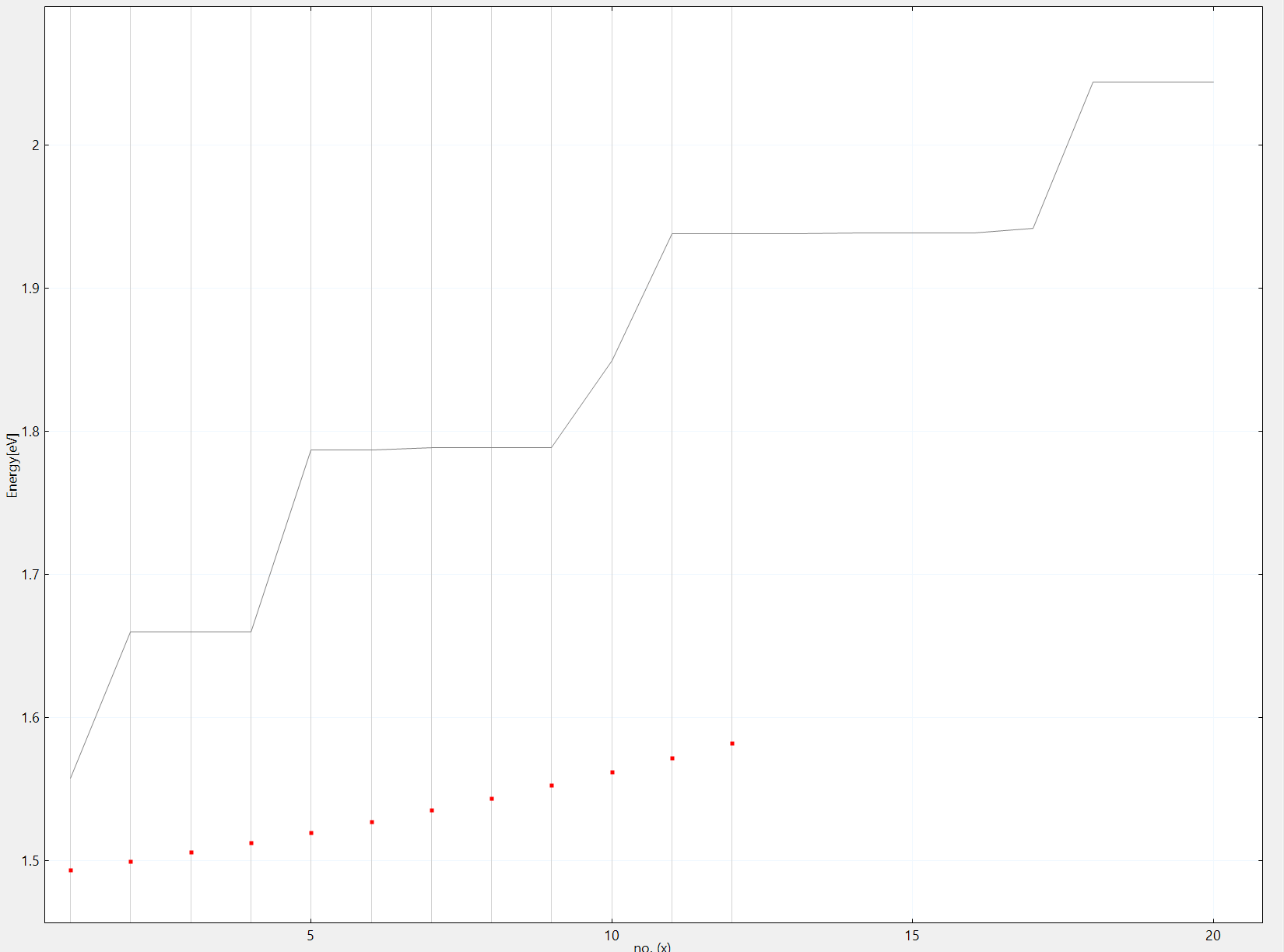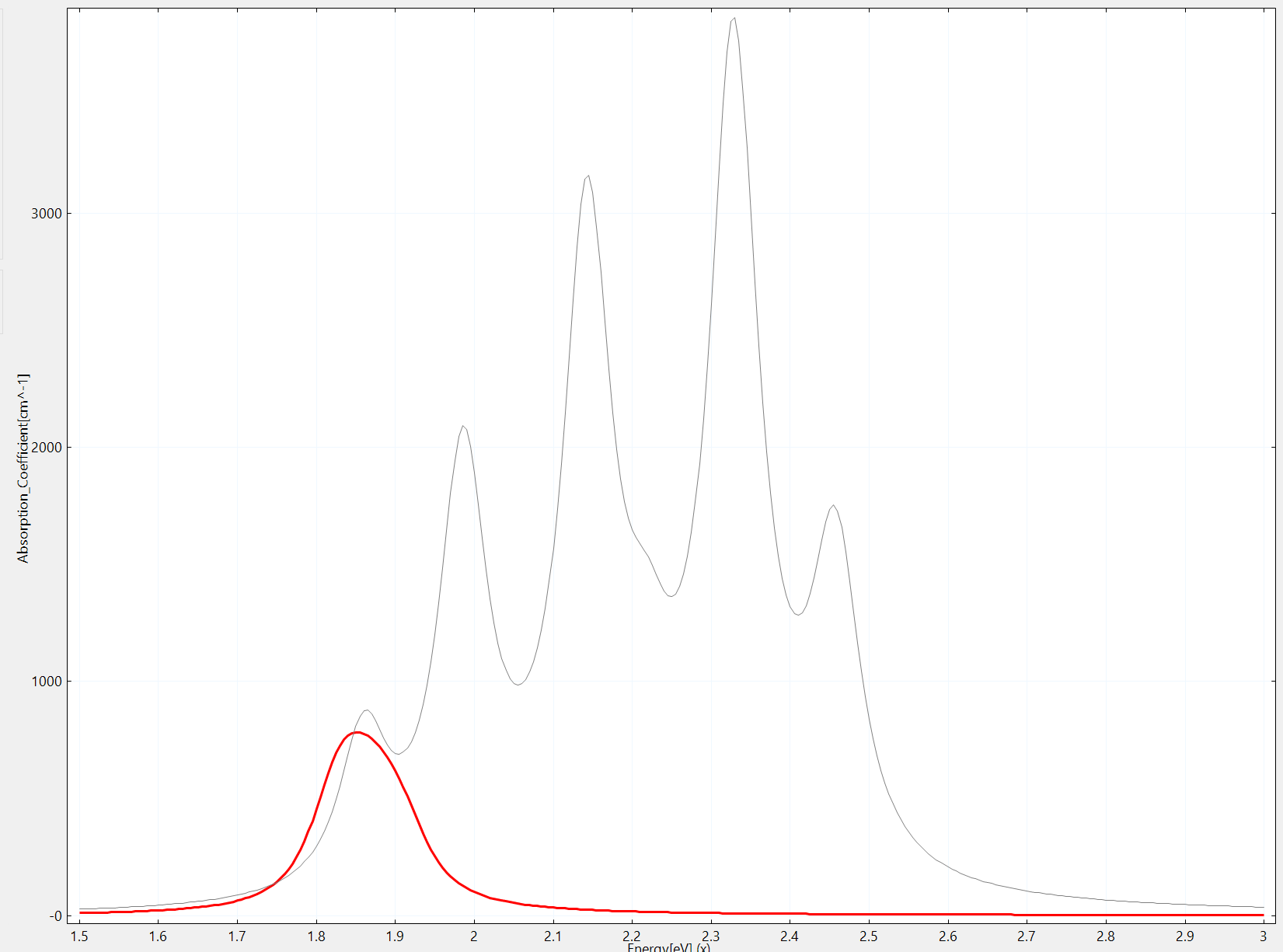5.8.3. Ellipsoidal CdSe quantum dot
Added in version 2.4.12.
- Files for the tutorial located in nextnano++\examples\quantum_dots
QD-CdSe-ellipsoidal_zb_II-IV_Ferreira_BJP_2006_3D.nnp
- Output files:
bias00000\Quantum\quantum_region\Gamma\energy_spectrum.dat
bias00000\OpticsQuantum\quantum_region\absorption_coeff_spectrum_average_eV.dat
In this tutorial we calculate the eigenenergies and absorption coefficient spectra of a spherical and ellipsoidal CdSe quantum dot reproducing figures from [Ferreira2006]. The spherical quantum dot has radius 5 nm while the ellipsoidal is elongated in the z direction 10 times.

Figure 5.8.3.1 TEMPORARY FIGURE: a) Spherical quantum dot with radius 5 nm. b) Ellipsoidal quantum dot 5x5x50 nm.
The temperature is set to 300 K and the barriers are formed due to interfacing with the “Vacuum”, reasonable offsets are assumed. The potential inside the QD is not assumed to be 0 eV, hence energy spectrum obtained in the simulation is shifted respective to the [Ferreira2006]. We use a grid spacing 0.5 nm solving the Schrödinger equation within the effective-mass approximation, single band. The electron effective mass of CdSe is taken \(m_e = 0.112 m_0\) after [Adachi2009]. From the same reference we took effective masses of holes. The best match with the [Ferreira2006] was obtained when using density of state masses.

Figure 5.8.3.2 TEMPORARY FIGURE: Eigenenergies of the lowest electron states in the quantum dots.
Note that only 20 electron and hole states are included in the simulation of the spherical QD and 12 for the ellipsoidal QD. The numbers have been chosen such to match optical spectra as in the publication. Optical transition broadening was adjusted as a free parameter.

Figure 5.8.3.3 TEMPORARY FIGURE: Absorption spectra of spherical and ellipsoidal QDs.
Both figures are in very good agreement with Fig. 1 and Fig. 2 in [Ferreira2006].
Last update: 2025-10-27